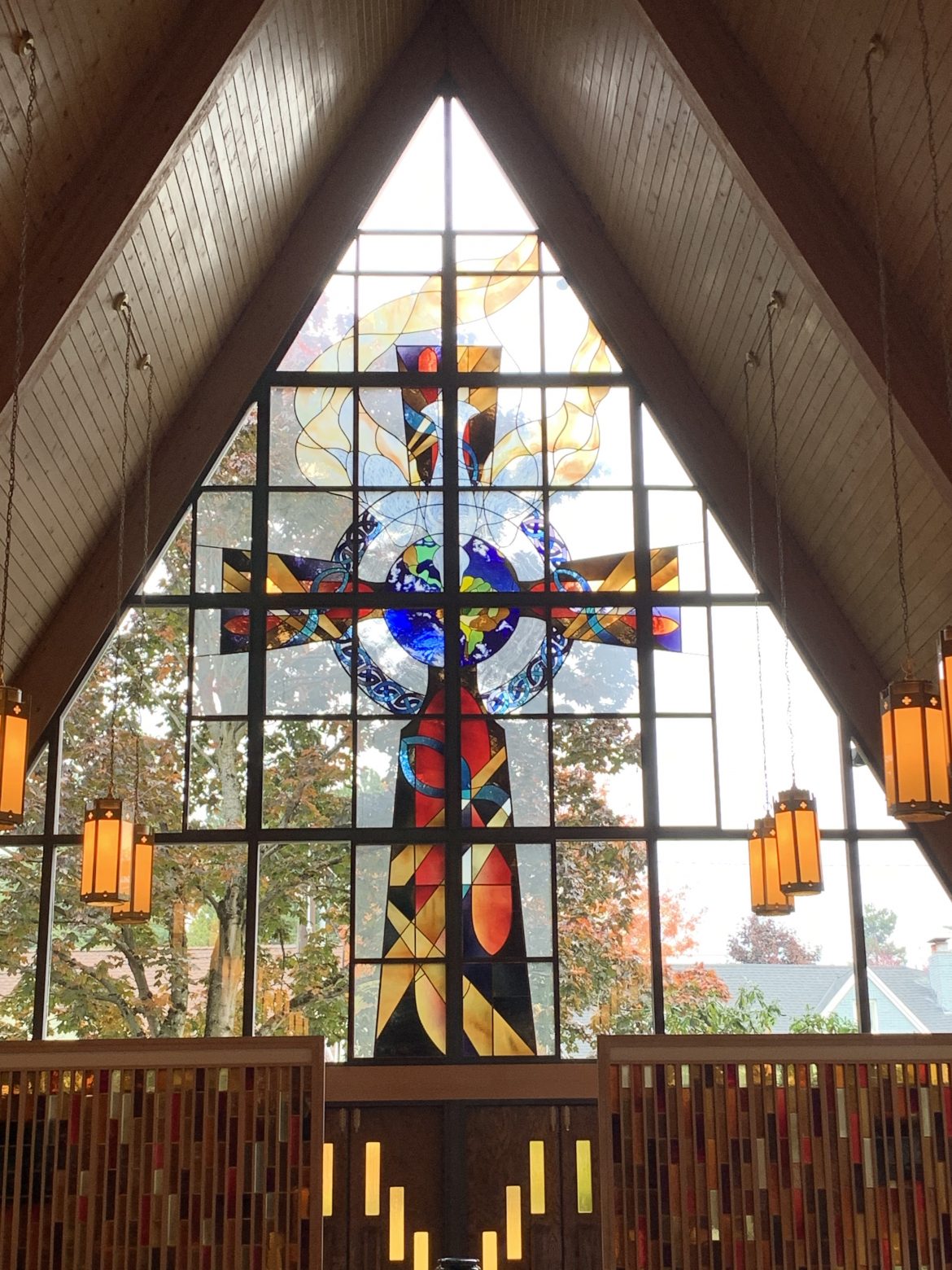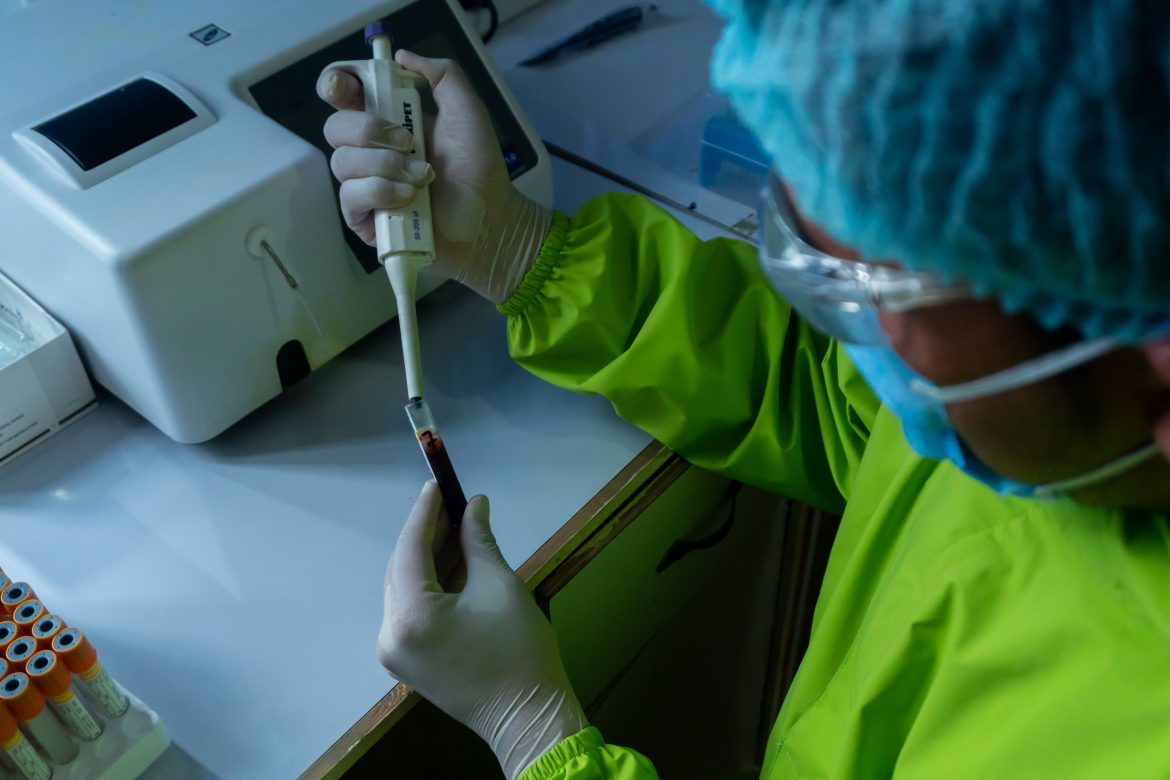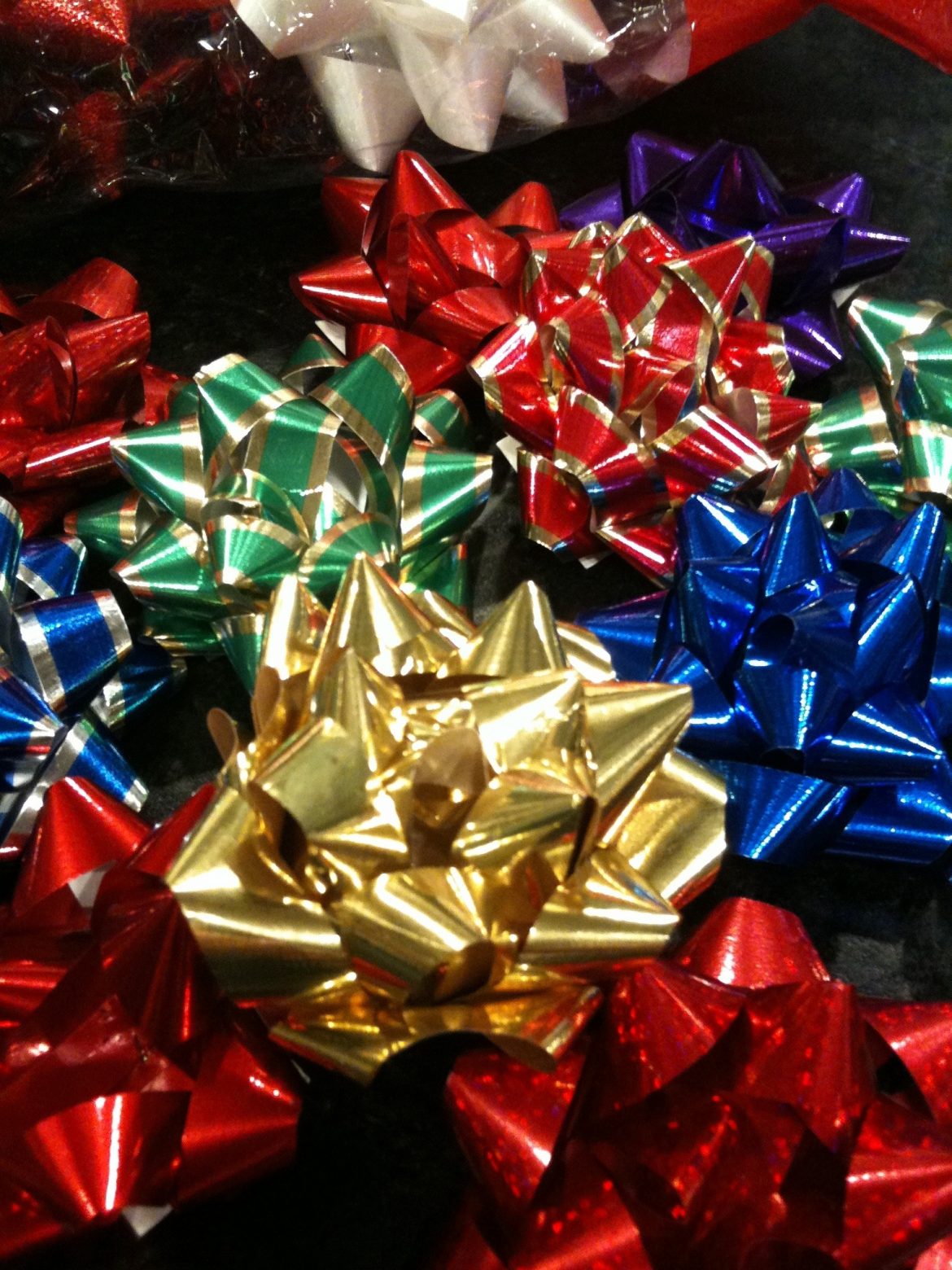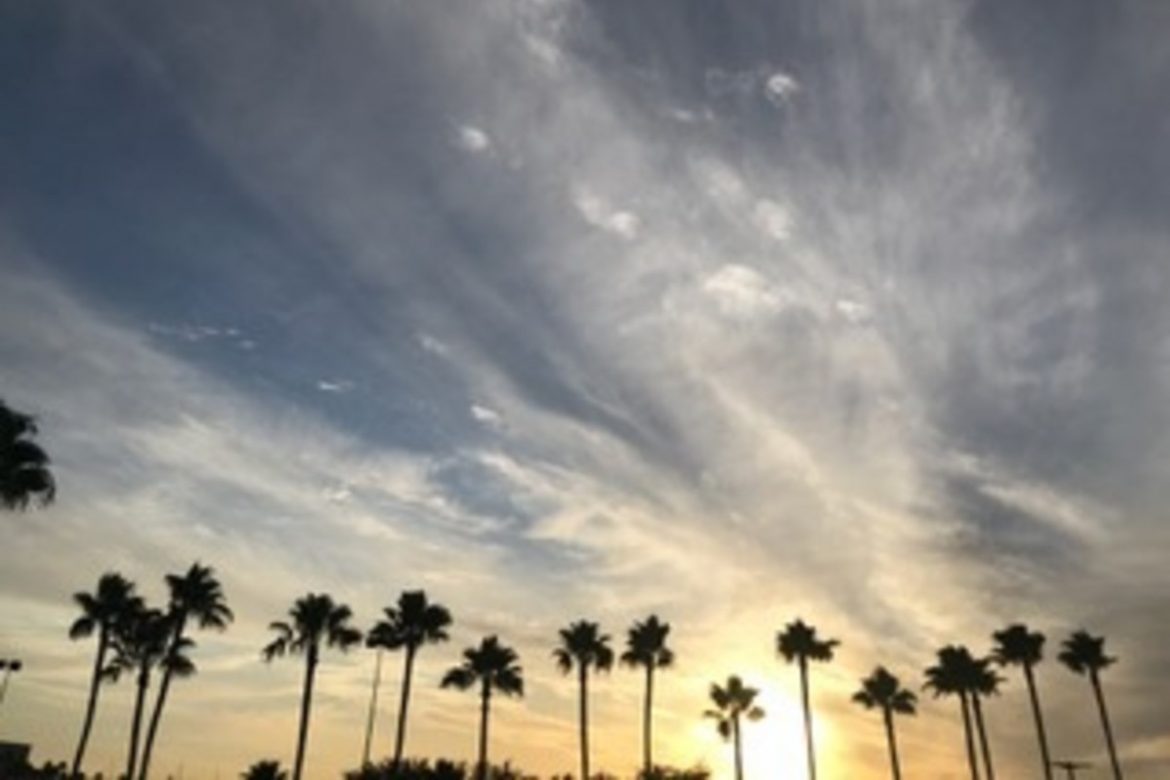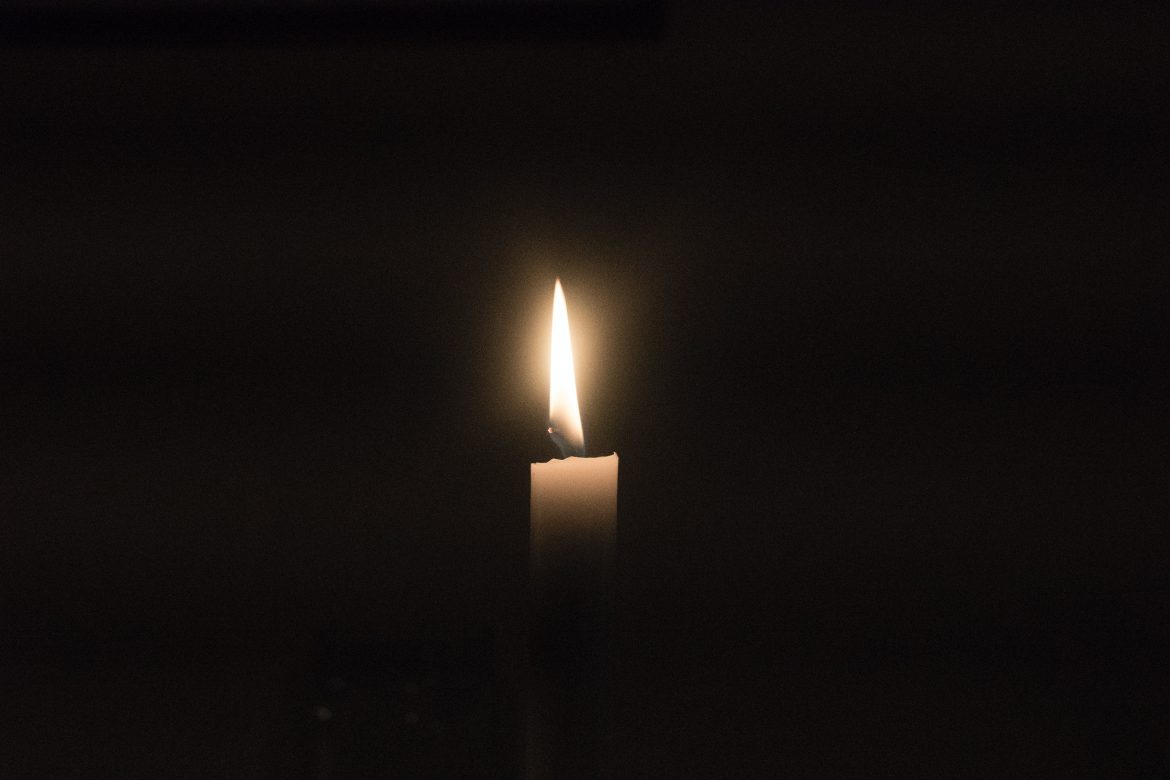It is wonderful to have these contemplative services to help us enter into the spirit of the season of Advent. I so appreciate St Andrews Episcopal Church in Seattle giving me permission to repost these. I am always delighted to hear how many of you are also blessed by these.
A contemplative service with music in the style-of-Taize for the Third Sunday of Advent. Carrie Grace Littauer, prayer leader, with music by Kester Limner and Andy Myers.
Permission to podcast/stream the music in this service obtained from One License with license #A-710-756 with additional notes below.
“O Come, O Come, Emmanuel” is a metrical paraphrase of the plainchant “O Antiphons” that come from the antiphons before the Magnificat during evening prayer on December 17-24). The translation is from John Mason Neale, 1861. Public domain.
“Aber du Weisst,” -text is adapted from a prayer by Dietrich Bonhoeffer, music by Taizé, copyright and all rights reserved by GIA/Les Presses de Taize.
“See I am Near,” words and music by Taizé copyright © 2008 GIA/Les Presses de Taize. All rights reserved.
“Magnificat”- translated as “my soul magnifies the Lord…” — The song of Mary, from the Gospel of Luke. Copyright and all rights reserved by GIA/Les Presses de Taizé.
www.saintandrewsseattle.org
by Sue Duby, photos below by Sue Duby
As I glimpsed from the kitchen, my eye caught Chuck in his favorite contemplative pose. . . arms resting on the window ledge in the bedroom, gazing out into the backyard, taking some moments of quiet to be still.
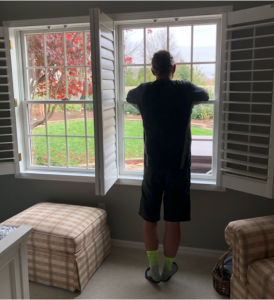
That pose delights me as well in the Summer. Lush greens, my colorful cutting garden corner, loaded hydrangea trees. But now? My favorite Fall red and orange leaves have mostly faded and blown away. The garden sports brown twigs and perennial plant stubs ready to be hidden by piles of mulch until Spring. Even so, I decided to join Chuck for a moment and just look.
Suddenly, as if my vision clicked to a new channel, I saw it; our four rose bushes, leafless, bare and pruned, ready for Winter. But, on each, a few large blooms and new buds ready to unfold. Deep color. Still fragrant. In late November? After two freezes? And then, I smiled. Flowers, just for me? As if God whispered, “I know how you love your garden. I’m here”. I felt seen by Him. Those crazy blooms just won’t quit… like His pursuit of and presence with me.
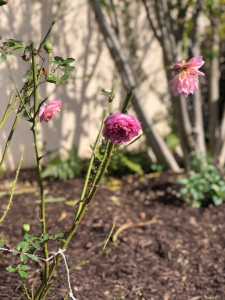 Since that moment, I’ve been pondering. How is it that God, with all of humanity to keep track of, that He chooses to “see” me. Much likes Hagar’s flight to the wilderness in Genesis, angry at being harshly treated by her master Sarai. In the midst of great despair, an Angel meets her with instruction (return to your mistress and submit) and a promise (descendants and a son). Her immediate response? A declaration of wonder..
Since that moment, I’ve been pondering. How is it that God, with all of humanity to keep track of, that He chooses to “see” me. Much likes Hagar’s flight to the wilderness in Genesis, angry at being harshly treated by her master Sarai. In the midst of great despair, an Angel meets her with instruction (return to your mistress and submit) and a promise (descendants and a son). Her immediate response? A declaration of wonder..
“Then she called the name of the Lord who spoke to her, “You are God Who Sees”; for she said, “Have I not even here [in the wilderness] remained alive after seeing Him [who sees me with understanding and compassion]?” (Genesis 16:13 Amplified).
Whether the appearance of an angel who speaks or blooms on a fading rose bush, God has such creative ways (all personal to us) to remind us that He is near and truly “sees” us.
He doesn’t just “see” me by knowing my location. He “sees” me in the deepest sense of knowing my frame, my thoughts, my desires, my failures, my worries. . . all that I am!
Not only that (and that’s really enough), but He is “mindful” of me. His mind is full of thoughts about me. Such truth was a mystery to David in Psalm 8. . . and is a mystery to me as well!
When I consider your heavens, the work of your fingers, the moon and the stars, which you have set in place, 4 what is mankind that you are mindful of them, human beings that you care for them? 5 You have made them a little lower than the angels and crowned them with glory and honor (Psalm 8:3-5, NIV).
I’m longing to be “dialed in” closer to those moments during my day, when God gives a reminder that He sees me. Often in the simplest of moments, but requiring a pause to ask myself, “What do I see right now?”. In realizing He dropped multiple creative ideas for Christmas gifts in my frenzied mind yesterday. In balancing the checkbook and seeing provision. On a morning walk, crossing paths with a new neighbor who invited us a garden tour. In seeing along the way, I’m reminded of His mindfulness of me. How He knows what brings me joy and peace.
While grateful for His affection and care for me, I know it’s coupled with a challenge from His heart. While resting in being seen myself, who is it that He’s asking me to “see” and be “mindful” of? The cart sanitizer at the Walmart entrance? The grocery shelf stocker? The clerk handing me a receipt? The neighbor whose lights have been dim for a few days? The computer tech on the phone, sorting my glitches with broken English? A friend who pops in my mind with a nudge to send a text, “Thinking of you today!”?
Lord, remind me to take a deep breath and pause to consider the gift that you truly SEE me and are MINDFUL of me, right now, where I am. And tune my eyes to see those around me that long to be seen and encouraged by Your eye upon them.
Feature photo by Anika Huizinga on Unsplash
by Tom Sine
A NATIONAL CRISIS 2021… COVID-19 is putting the future of our society in peril
We are in a global battle with a deadly enemy: the COVID-19 Pandemic. A number of nations are wining the battle like New Zealand and Taiwan because they took the enemy very seriously very early on, their citizens followed medical professionals seriously, and took immediate steps to protect themselves and their neighbors from this deadly Pandemic. As a consequence, these two nations and a few others have won the battle and they are opening their societies again.
However, in the United States, COVID-19 is spreading out of control in many parts of our country. One of the major reasons it is spreading so aggressively is that a large number of Americans seem to be in denial about the danger this dangerous enemy poses. For example, disappointing numbers of Americans dismiss the warnings and advice of health professionals and refuse to cooperate in joining their neighbors to defeat this deadly enemy.
As a consequence, hospitals all over America are in serious danger of not being able to care for the rapidly expanding numbers of patients. The Washington Post reported on December 9 that “the United States once again set terrible multiple terrible records…3,140 corona virus deaths in one day, More than more than 106,000 covid-19 patients in hospitals, and a running average of more than 208,000 new daily cases.”
Confronting our Failure to Take the Advice of Health Professionals Seriously
One of the reasons a growing number of Americans are catching this deadly flu and dying is that too many of us are not taking this deadly enemy seriously. I believe the second reason we are losing this war is that we seem to have less regard for the advice of health professional that people is a host of other nations who have brought the virus under control through a high level of citizen collaboration and bringing pandemic control.
A major reason we American are facing a health care disaster as we race into 2021 is that many of us seem to have little regard for scientific advice of health professionals due to the disruptive influence who embrace the “fake news mantra”that have become popular in the US recently.
Many seem to uncritically embrace unsubstantiated conspiracy theories. As a consequence as we are involved in a battle with a deadly COVID-19 Is expanding more rapidly in America than a number of other countries due a huge number American who refuse to take informed medical advice seriously are putting their lives and the lives of their loved ones at serious risk. Wouldn’t be a disaster to see an escalating number of Americans, who care about human life, loose this deadly war because we refuse to follow informed medical advice?
A NATIONAL CRISIS 1941… World War II was a deadly killer.
I want to show you how we can all become united in battling this deadly pandemic just like we did in battling the common enemy in World War II. I will show you how we can defeat this deadly COVID-19 virus, by collaborating with our medical warriors and our national leaders as they launch a new program of inoculation to defeat the deadly threat of COVID-19. It will also enable us to open our society again and reignite our economy. Then we can join with others in defeating this deadly virus that threatens the lives of our most vulnerable neighbors in countries all over our planet.
Let me show you the stark contrast of how Americans responded to our first national crisis as we joined our allies in World War II. Then, I will briefly show how the fake news message has been undermining our ability to defeat the deadly COVID-19 virus that continues to destroy precious human lives, not only in the US, but everywhere on our planet.
I am one of a small, aging population of Americans, who actually still remembers World War II. When I was 5 years old, I vividly remember my mother, Katherine, on December 7, 1941, pulling me up on her bed next to her and saying, “Tommy it is very important you listen to this very important news”, as she turned on our only small radio in my parent’s bedroom. “I want you to listen to President Roosevelt and remember what you hear.”
I heard President Roosevelt, with millions of other Americans, declare: “This day will live in infamy”, as he described Japan’s unprovoked bombing of our ships and our sailors in Pearl Harbor as an act of war.
My mother then explained, “this means that our country is going to war.” As a 5-year-old, I did understand we were going to be involved in fighting with planes and boats. But, of course, I had no idea of the gravity of what was happening. The United States was drawn into this global war that was a devastating war for people in many different countries. It also dramatically changed all of our lives.
For example, three months later, as a 6-year-old, I was on a train to San Francisco to rejoin my parents. A month earlier, my father and mother had moved to San Francisco so my dad could take a job building ships to transport American troops. A retired woman and friend of the family, Joan, accompanied me on that long train ride. After I settled into a small apartment, the reality of the war suddenly became more real. I started experiencing sporadic air raid drills at Redding Elementary School and in the evenings at home. We never knew if they were real or not; which, even for children, made everything more uncertain.
WORLD WAR II CRISIS – We all pulled together
However, what I found particularly impressive was the remarkable way I saw people in news reels all over America responding to this national crisis by working together like one big family. Wives took jobs in factories. Farmers started focusing their farming to feed the troops as well as those of us at home. Many people started cutting back their spending to buy War Bonds to support our troops and our allies. We all seemed to sense how important it was to work together to defeat this common threat. Americans all over the country, without regard to political affiliation, started investing their time and resources together to help support this important effort. Of course, there were pacifists whose values did not allow them to go to war but they served at home in a range of ways.
I remember that suddenly the range of food we could buy in stores was sharply rationed to support our troops. People started planting Victory Gardens and recycling everything. I still remember that first Christmas when my dad, Tom, made me a scooter out of a couple of old two-by-fours and the two halves of a broken roller skate since there were very few toys available for Christmas in 1943.
One of the reasons we were so strongly united in the 1940s was our society wasn’t as divided as it is today. We set aside our political differences as Republicans, Democrats and Independents to focus on supporting our troops in defeating our common enemy with our allies.
SCIENCE IS RIGHT! & COVID DEATH WAVE IS OUT OF CONTROL!
As we race into 2021, we need to join those who are setting aside political differences. We need to support our medical warriors who are risking their lives every single day to protect us from our common foe. It is essential that we embrace those who remind us of the scientific fact that everyone on our planet is facing a deadly foe… that COVID-19 is real… and it is intent on killing hundreds of thousands, not only in the United States, but all over the planet.
We need to start by categorically rejecting the fiction that COVID-19 isn’t real. Apparently, a number of gullible people who have embraced conspiracy theories are actually in denial that the COVID-19 Pandemic is real. In fact, last week I heard a story of a hospitalized woman, in the final stages of dying from COVID-19 exclaiming, “how can this be happening to me… this virus isn’t real!!”
IN 2021, LET’S ALL PULL TOGETHER & PUT HUMAN LIFE FIRST!!!
We didn’t doubt for a second that our lives and futures were at serous risk during the WW II crisis. No one denied that our opponent was real. Just over 400,000 Americans lost their lives. The COVID-19 Pandemic has already taken 283,000 American lives according to the Washington Post on December 8, 2020. Everyday we are losing front-line health workers to COVID-19 and those courageous doctors and nurses assure you it is real and it is deadly.
FAKE NEWS IS FAKE! WEARING MASKS & DISTANCING SAVES LIVES!
Apparently, a surprising number of Americans today seem to have “drunk the Kool-Aid” and are in total denial that COVID-19 is real and that wearing masks and social distancing are essential. Instead of following the important guidelines of our medical leaders, fake news advocates are urging us to dismiss such medical instructions as nonsense or a violation of our “personal rights”.
Because of our current lack of commitment to take needed preventative steps, The Institute for Health Metrics and Evaluation reports that the number of cases of COVID 19 in the US now surpasses 15.5 million with more than 292,00 deaths. They predict that rates are increasing and about 538,893 Americans are projected to die of COVID-19 by April 1, 2021. Why can’t Christians who believe we are called to love our neighbors and care about human life join those who put protecting human life first?
This new global crisis is likely to take more lives than the number of Americans that our country lost in World War II. Frankly, it looks like Christmas and New Year’s could be even larger spreading events than Thanksgiving unless we become united with our health care workers and are determined to win this war too.
IF YOU CARE FOR THE LIVES OF YOUR FAMILY & FRIENDS… CHOOSE VIRTUAL CHRISTMAS!!!
Are you planning to put the lives of family and friends at risk by hosting super-spreader events for Christmas and the New Year… like too many Americans did at Thanksgiving?
Until we all get our vaccine shots, we urge you, who love your family and friends, to consider “virtual” Christmas and New Years Celebrations!
Christine and I canceled our Thanksgiving plans with two other couples who shared our concerns about spreading the virus. Instead, we had a Zoom Thanksgiving dinner with Christine’s nephew, niece, and their two pre-schoolers in Sydney, Australia. It was their lunchtime and our dinnertime. We had a lovely on-screen conversation as we dined and a good visit with them afterwords. It was one of our best Thanksgivings ever.
We urge everyone to consider substituting a Zoom visit this Christmas not only for dining together but planning activities as well that is recommended by AARP Magazine. Doesn’t that option make sense to wait since most of us will likely be able to receive a vaccine in 2021?
SUPPORT BIDEN & HARRIS TO DEFEAT COVID-19 in US & SAVE THOUSANDS OF LIVES!
The COVID-19 Pandemic is a deadly threat. It is real and scientific research can be trusted. In our Christian community, we are looking forward to joining people of faith and a broad range of political affiliations to become united in defeating the COVID-19 pandemic. We invite you to “join hands” with those of all political views by responding to the call of our new President Joe Biden’s and Vice President Kamala Harris’s call to join an initial 100 day campaign to defeat this killer pandemic by wearing masks and social distancing to significantly reduce the pandemic. It will save lives of both your family and neighbors until we all can get in live for the new vaccine.
If we all pull together in common cause, we can win this global war with the deadly COVID-19 Pandemic!!! We ALL need to work together as a nation not only to get our economy rolling again but to open all of our schools. We need to reach out to ensure our neighbors everywhere also have access to the life-saving vaccine. As we pull together, we demonstrate our commitment to win this global war, save human lives and defeat this demonic pandemic!
FEEDBACK
I welcome your responses and your new examples of cooperation to defeat COVID-19 in your community. Also, I would like to know if you share it and what kind of response you receive. Please contact me here.
Wishing you and yours a safe and joyous Christmas and a new year in which we work together with health professionals and national leaders to win this war and join other nations in creating an open society where we care for one another in the turbulent 2020s!
The entire Christmas story is about Interruptions… and how people responded to these God gifts of interruption.
Think about the interruptions you’ve had in your life in 2020. There have probably been a lot of them!
Make a list.
How can these be seen as GIFTS rather than just frustrations and pains? Read Luke 1:26-38 and consider the gift of interruption Mary received.
LUKE 1: 26-38 THE MESSAGE
In the sixth month of Elizabeth’s pregnancy, God sent the angel Gabriel to the Galilean village of Nazareth to a virgin engaged to be married to a man descended from David. His name was Joseph, and the virgin’s name, Mary.
Upon entering, Gabriel greeted her:
Good morning! You’re beautiful with God’s beauty, Beautiful inside and out! God be with you. She was thoroughly shaken, wondering what was behind a greeting like that. But the angel assured her, “Mary, you have nothing to fear. God has a surprise for you: You will become pregnant and give birth to a son and call his name Jesus.
He will be great, be called ‘Son of the Highest. ’ The Lord God will give him the throne of his father David; He will rule Jacob’s house forever— no end, ever, to his kingdom.”
Mary said to the angel, “But how? I’ve never slept with a man.”
The angel answered,
The Holy Spirit will come upon you, the power of the Highest hover over you; Therefore, the child you bring to birth will be called Holy, Son of God.
“And did you know that your cousin Elizabeth conceived a son, old as she is? Everyone called her barren, and here she is six months pregnant! Nothing, you see, is impossible with God.”
And Mary said,
Yes, I see it all now: I’m the Lord’s maid, ready to serve. Let it be with me just as you say.
Then the angel left her.
READ this in OTHER Translations
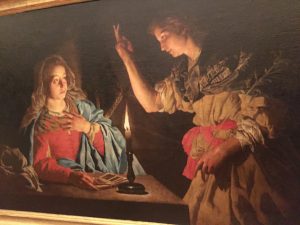
The Annunciation
How did Mary’s life change after she had the encounter with the angel, her gift of interruption?
What if Mary hadn’t said yes? She was willing to have her whole life disrupted by God. How about you?
Are you willing to receive the gift of interruption? Are you wiling to allow God to interrupt your plans, your ways, your hopes? And even your dreams? Are you willing to allow God to interrupt you?
Are we willing to be willing? Talk to Jesus about how you view interruptions.
Consider how God has interrupted you this past year? How has this changed/affected your life?
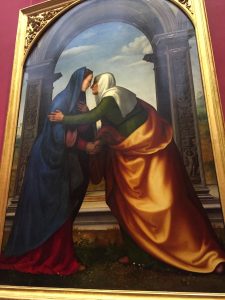
Mary visits Elizabeth
Read the rest of Luke 1 and the story of Zechariah and Elizabeth. How were their lives interrupted? How was this a gift to each of them?
What have been the gifts you’ve received from the interruptions of 2020? Talk to Jesus about these interruptions.
At the end of Luke 1, after the Angel’s Interruption, Mary goes to see Elizabeth for comfort and understanding. Who has helped you during this crazy season of Covid-19? Who are the people who have been your gifts in 2020? Spend some time thanking Jesus for them. Take time to send them a note or make a phone call to thank them!
Find a Christmas Bow or a gift box to use as a reminder to be grateful for the interruptions. Place the Bow or the Gift Box where you can see it on a regular basis as a reminder that God is with you in the interruptions! And that God is still at work even in these unlikely gifts!
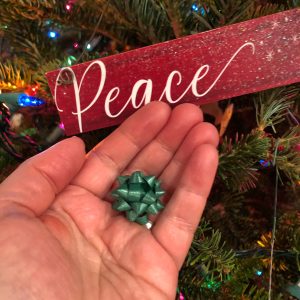
Gift of Peace
More ways to RECEIVE THE GIFT this ADVENT.
Take time to receive Advent, make time to receive these days before Christmas a gift… you might put a gift box or wrapped present in the center of your dining room table or on your coffee table or a small gift box on your desk to remind you that these days before Christmas are gift to be enjoyed and treasured. Use that gift as a symbol of this gift of Advent and as a representation of your willingness to receive the gift of interruption this year and the gift of Jesus.
Set aside a specific time each day to thank God for the gifts God has given you in that day. You could set your phone alarm with a reminder “today is a gift remember to receive it!” You can text your friends and family with that message too.
Each person in the Christmas story received the gift of Jesus in a different way… as a community or family prayer exercise you can write down and/or run off the names of people from the nativity story (everyone from Mary and Joseph, their parents, the shepherds and innkeeper and guests, to the Magi , Zechariah and Elizabeth and even King Herod). Write or copy these names on small pieces of paper and fold them in half. Place these names in a Nativity Scene, or better yet an Empty Stable for a Manger Scene. Ask each person in your group to take a name and carry it with them during this season of Advent, between now and Christmas. Allow God to show them how this person received the gift of Jesus. Ask God to show you how this person changed as a result of this gift of interruption, and allow God to open your life/heart to change and growth as you receive the gift of Jesus too.

Receive the Gift
Until December 14th, our prayer cards and online courses are on sale! Both make great Christmas presents. We are delighted to offer these to you at a discounted price during this season. We will ship the prayer cards for you to the address you provide, so no need to deal with the post office lines! Additional discounts may be available for bulk orders, please email us if you are interested!
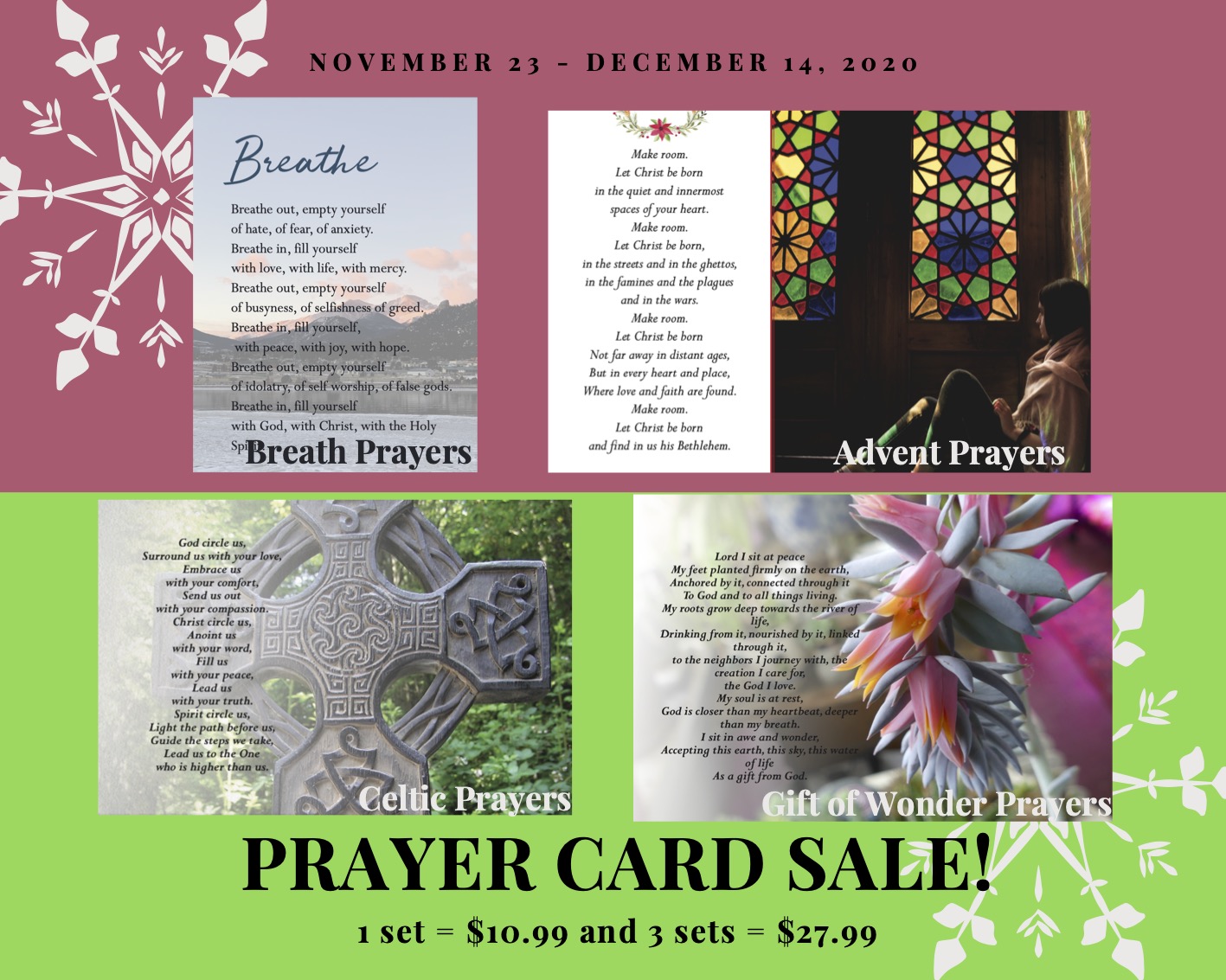

- Our Advent Retreat Online experience offers 90 days of access to move through at your own pace.
- The Gift of Wonder Online Retreat include 180 days of access so you can begin after the holiday season.
- Spirituality of Gardening Online Course is a great course to begin now as December and January are the dreaming months for the garden in the Northern Hemisphere. You will receive 180 days of access upon purchase.
These courses make great gifts as well! Here is how to gift a course:
- Click on the course page you wish to gift.
- Click “Purchase” button
- Create an account using the email of the person to whom you are gifting and password.
- Input your payment information.
- The recipient of the course will receive an email letting them know they are enrolled. Be sure to share the password you created with them!
by guest writer Bettina Schuller, all images by Bettina Schuller
Glory to thee, Thou glorious sun, Face of the God of life. —Traditional Celtic prayer
Every year I look forward to Advent. I still remember those quiet Sunday afternoons of my childhood in Germany when the Advent wreath candles were burning and my mother and I would sing Christmas songs. It grew dark early in Northern Germany and we would sit together for hours, singing, praying, enjoying the silent moments, while gazing at the light of the flickering candles.
I miss the peace and joy of my childhood Advent. Every year, I promise myself to create quiet time during this season and connect with God in a deeper way.
This year I will celebrate a quiet Advent and lean every morning towards THE Light to come. More than any other year, we need to lean into the Light and also discover the light within ourselves.
If you are like me, having a daily morning routine is essential and I created a beautiful morning ritual for this time. Since I relocated to St. Petersburg, Florida in 1989, my childhood memories are not easy to replicate in the warmth of the sunny Florida afternoons.
Let me take you into the beautiful light of my sunrise mornings:
I get up around 5:30 am, when it is still dark. With a cup of green tea, I watch the darkness turn into light, slowly but with assurance that with every minute the light will become brighter. Still in the dark, I light a candle and I breathe deeply into the new day and say my breath prayer: “I am the light of the world.”

I invite you to my Breath Praying Pause and to come into the presence of God right now:
Praying Pause
You are the light of the world. …let your light shine before others, that they may see your good deeds and glorify your Father in heaven. —Matthew 5:14-15
~Breathe a calm and slow breath in… and out… You are the Light of the world…
~Breathe in… I am a light… breathe out…in this world… stay with this for a few breaths…
~Breathe in… I am shining… breathe out…I am shining… stay with this for a few breaths…
~Breathe in with a smile… I am a light… breathe out with a smile… I am shining… smiling… shining…
~Breathe in God’s Light within you and all around you…
Nothing can dim the Light that shines from within. —Maya Angelou
As I see the light getting brighter, I put on my walking shoes and drive down to the water to watch the sunrise. I am blessed to be able to watch the sunrise over open water.
Every morning is different and reminds me that beauty is as variable as life itself. Some mornings the sky is clear and the sunrise is completely visible from the first red glow to its full round beauty. Other mornings, it is cloudy and the sun peeks out behind a layer of clouds and goes back into another layer of clouds as soon as it is risen. Sometimes the sky is completely overcast and the sun cannot be seen at all, but I know that the sun rises every day whether I can see it or not.
Can you imagine what life would be like if the sunrise looked the same every morning? We would not appreciate it as much or know the beauty in diversity.
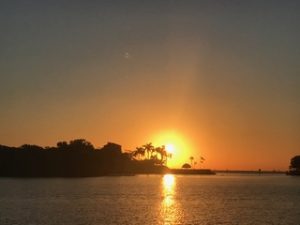
The sunrise is a wonderful metaphor for God’s work in our lives. Sometimes we can see God’s work clearly, while at other times it is hidden behind a cloud of pain, to peek out again when we least expect it. As surely as we know that the sun rises every day, we can also be sure that God is present in our lives every moment—whether we can feel it or not.
A quote from Anthony De Mello comes to my mind as I am breathing deeply and with gratitude:
“Is there anything I can do to make myself Enlightened?”
“As little as you can do to make the sun rise in the morning.”
“Then of what use are the spiritual exercises you prescribe?”
“To make sure you are not asleep when the sun begins to rise.”
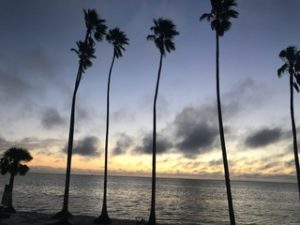
- If you enjoyed the Praying Pause, please join my Facebook group: This is Living. Practicing the Presence of God.
- You can also find me at my website.
- You can find my book: This is Living. Practicing the Presence of God. A Prayer and Mediation Guide for Daily Life on Amazon.
I am filled with gratitude and love as I connect with you during this special time and I pray that the Light of Christ will illumine your Advent season 2020!
Bettina’s Bio
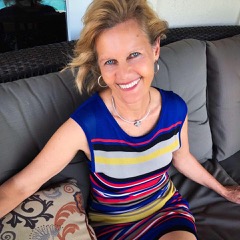
———————-
Note: As an Amazon Affiliate, I earn an amount on qualifying purchases. Thank you for your support for Godspace in this way.
By the tender mercy of our God,
the dawn from on high will break upon us,
to give light to those who sit in darkness and in the shadow of death,
to guide our feet into the way of peace. (Luke 1:78-79)
Advent recalls the story of a weary world longing for hope and for freedom, and how God came to us right here in this world, in flesh, in the form of a little child. Advent calls us to reflect on the truth that when our lives are most impoverished, when it seems that all possibilities lie fallow and hope is dim, God draws close to us.
2020 has been a year that has certainly tested our courage and our hope. So many of the folks with whom I talk each week carry a weariness of soul and a weightiness of grief that stems from so much change and so much loss. This year we are limping into Advent with a new level of thirst and hunger on so many levels and in so many ways.
In truth, it has been sobering to watch the mile-long lines of cars as families await meals from food banks. It’s hard to see the tears of medical personnel who comfort those who are dying alone, isolated from their loved ones. It’s difficult to hear of the thousands who are losing their homes. It’s been challenging to socially distance well, when our hearts are dying for connection. It’s heartbreaking to watch so many funerals online. We grasp at any crumb of normalcy we can get—our turkey dinners, the deals on Black Friday, the strange sports schedules, a favorite singer offering a concert on Facebook. We want things to get better, to get back to “normal” and for life to go on as it should have been. Conversely, we may lower our eyes in denial, especially if our lives have not been as deeply disrupted as other’s have been. Even so, our longing hearts groan during the wait for this to get better.
But can this painful longing be a gift? Could it be that what we truly long for is finally rising to the surface? Do we dare stay awake to it?
Throughout scripture we see that suffering reveals what is most deeply true in the human heart. I believe that what is being awakened in this time is a hunger and thirst for righteousness— that is, for a weary, fragmented world to be set right.
And it is the same longing that is in God’s own heart for us, and that is reflected in the inaugural words of Jesus:
The Spirit of the Lord is upon me,
because he has anointed me
to bring good news to the poor.
He has sent me to proclaim release to the captives
and recovery of sight to the blind,
to let the oppressed go free,
to proclaim the year of the Lord’s favor.
We long for the new world in which those who have been forgotten over and over again are given the finest seat at the banquet table, where those crushed by the traumas of life and sin can be free, and where wealth and power do not presume to deserve the most honor nor to have the last word, rather, a world where they, too, can finally see a new way of being. We long for Jubilee. Ultimately, it is a longing for God. If there were no God, this sad world would be acceptable to us just as it is. But by the grace of God, in our hearts we know it is not.
And so, the Spirit continues to speak Good News over the earth. We have seen the pattern all throughout the scripture—God continues to bring forth new life into places of loss and brokenness, and we can trust that something new is coming forth now. Therefore, now is the time to enter our Advent work more earnestly than ever as we take a fearless inventory of the darkness. Now we let our deep longing break through our grief and numbness to open us to the new world that God is creating among us. Now we awaken to our addiction to comfort and a status quo, to our selfishness and blindness. Now, let us allow the hunger and thirst for righteousness to open us to renewal and transformation, that we may truly be the people who exude Good News, people who are the light of the world and bearers of Living Water, as Jesus foretold. Now, let us draw courage to enter into this new world unfettered by our creature comforts, rejoicing in the tender mercy of our God, for now, we act in accordance with God’s future, the one for which we truly long.
For indeed the night, the darkness, is holy. It readies us for the coming of the Dawn from on high.
O holy night, the stars are brightly shining,
It is the night of the dear Savior’s birth;
Long lay the world in sin and error pining,
‘Till he appeared and the soul felt its worth.
A thrill of hope the weary world rejoices,
For yonder breaks a new and glorious morn;
Fall on your knees, Oh hear the angel voices!
O night divine! O night when Christ was born.
O night, O holy night, O night divine.
Amen, God is with us.
As an Amazon Associate, I receive a small amount for purchases made through appropriate links.
Thank you for supporting Godspace in this way.
When referencing or quoting Godspace Light, please be sure to include the Author (Christine Sine unless otherwise noted), the Title of the article or resource, the Source link where appropriate, and ©Godspacelight.com. Thank you!

